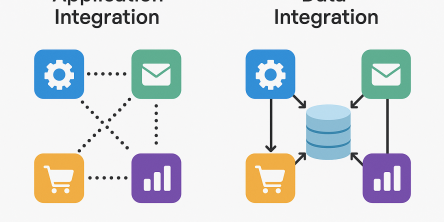A Handy Guide for Business Intelligence Implementation

Organizations can leverage valuable insights by implementing a robust business intelligence (BI) system that empowers data-driven decision-making. It is about collecting, analyzing, and presenting data to help businesses make better decisions. It is while making informed decisions to drive strategic growth. In today's day and age, BI is more important than ever before. With the ever-increasing amount of data that companies generate, it is becoming increasingly difficult to make sense of it all without the help of BI tools. However, implementing a successful BI solution requires careful planning, strategic considerations, and adherence to best practices.
While BI has already proven to be an asset for countless companies across the broad spectrum of industries across the globe, it offers them to gain a competitive edge, improve their bottom line, and do so much more. However, this BI journey is not without challenges. Right from data quality issues to organizational resistance, there are several pitfalls that businesses should avoid to ensure a smooth and effective implementation process.
BI can help businesses in a variety of ways, including:
● Identifying trends and patterns in data
● Analyzing customer behavior
● Measuring performance
● Making better decisions
● Improving efficiency
● Reducing costs
With this guide, I'll provide a step-by-step roadmap to navigate the BI implementation process effectively. From defining your objectives and selecting the right BI tools to data preparation, visualization, and user adoption, I'll cover all the essential aspects of a successful BI implementation.
Crucial Steps for Developing a Robust BI Implementation Strategy
1. Appoint a team for BI implementation: The first step in developing a BI implementation strategy is appointing a team responsible for the project. This team should have representatives from different departments, such as IT, finance, marketing, and sales. The team will identify the business needs, select the right BI tools, and implement the solution.
2. Define KPIs: The next step is to define the key performance indicators (KPIs) that will be used to measure the success of the BI implementation. KPIs are metrics that track the project's progress and help ensure the goals are met. Some common KPIs for BI implementations include:
- Increased revenue
- Reduced costs
- Improved customer satisfaction
- Increased employee productivity
3. Set a clear budget: It is essential to set a clear budget for the BI implementation project. This will help ensure the project stays on track and costs are not exceeded. The budget should cover the costs of software, hardware, training, and implementation services.
4. Identify the right technology stack: The next step is identifying the technology stack for BI implementation. The technology stack comprises the software, hardware, and services used to collect, store, analyze, and visualize data. Various BI technology stacks are available, so choosing the right one for the organization's needs is essential.
The next step would include a selection of the right BI Tools
- Evaluating BI Solutions
- Considerations for Tool Selection
- Scalability and Future Growth
Further, the next step would include data preparation and integration. Activities would include;
- Data Collection and Cleansing
- Data Governance and Quality Assurance
- Data Integration Strategies
5. Implement the solution: Once the technology stack has been identified, the next step is to implement the solution. It would include the creation of data models and architecture. It would comprise;
- Designing a Scalable Data Warehouse
- Developing Dimensional Models
- Implementing ETL Processes
This involves installing the software, configuring the hardware, and training users on how to use the BI tools. The implementation process can be complex, so it is essential to have a well-defined plan in place.
Developing a robust BI implementation strategy is essential for organizations that want to improve their decision-making, efficiency, and customer insights. Following the steps outlined in this article, organizations can develop a strategy tailored to their specific needs to help them achieve their goals. Enterprise business intelligence is a powerful tool that can help organizations to make better decisions, improve efficiency, and gain a competitive edge. By implementing a robust BI implementation strategy, organizations can get the most out of BI and use it to achieve their business goals.
Similar Articles
In the world of finance, speed and accuracy are everything. Decisions made a day late can cost millions, and delayed visibility into financial performance can leave even the best organizations blind to risks.
Discover the best tools to enhance employee recognition, boost morale, and create a more motivated, engaged workplace culture.
At first glance, off-the-shelf software appears to be a dream come true. They are quick to set up, cheaper upfront, and marketed as “universal.”
A modern business must continually adapt. This bit everyone seems to know.
The modern healthcare industry is undergoing a significant transformation. The models of healthcare that we are used to thus far are now making way for a more data driven approach
In the modern world, maintaining good health often feels like a constant challenge. Between busy lifestyles, sedentary habits, and lack of motivation, many people find it difficult to stay consistent with exercise, diet, or wellness practices.
Every news publisher's dream, or just getting started, hits that wall sooner or later. What do you build your site on? You’ve basically got two roads: WordPress or custom development.
Discover key features construction teams need in permit tracking software to boost efficiency, stay compliant, and streamline project management.
Thanks to cloud computing, specialized SaaS apps have become rather accessible.








